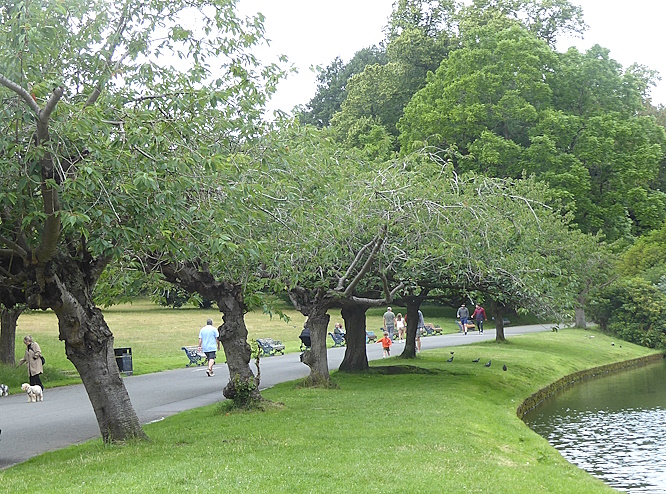
Sefton Park has everything we look for in a Sunday walk: lake birds and woodland birds with occasional rarities, interesting trees, and the occasional surprise. (And, importantly, a set of reliable public toilets!) Today didn’t disappoint. Even the weather had cooled down a bit. As usual, the southern end of the lake was full of water birds. Mallards, including one creamy-coloured one that we haven’t seen before. Coots and Moorhens, Canada Geese, crowds of gulls including Herring Gulls, Lesser Black-backed Gulls, a few juvenile Common Gulls and one Black-headed Gull in summer plumage, who had probably returned early from its breeding area. There was one female Tufted Duck, a lone adult Great Crested Grebe and a pair of Little Grebes without chicks. The male Mallards were noticeably scruffy as they have started to moult.
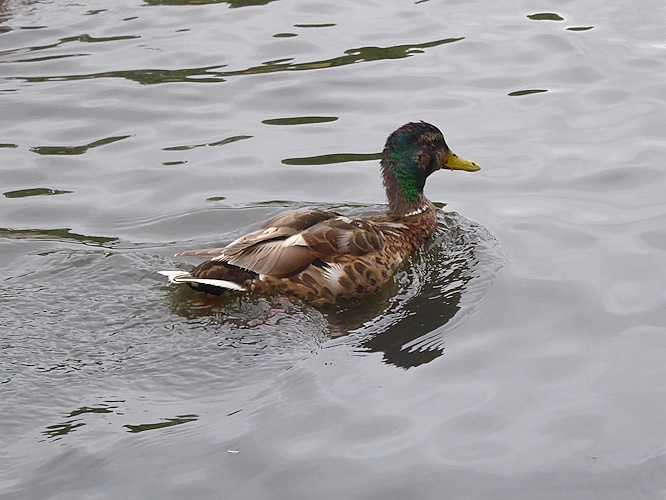
A pair of Mute Swans were shepherding five half-grown cygnets, still a little bit fluffy.
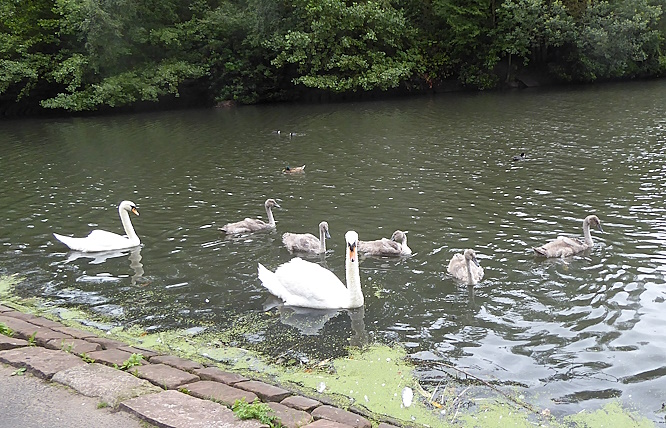
One Mallard mother had four ducklings, three blond ones and one normal brown one. We thought we could guess who was the Daddy.

Behind the champion Black Walnut, opposite the bandstand, are at least two Silver Maples Acer saccharinum, which we went to look at. They don’t seem to have set seed this year and the leaves are partly turning red. We were surprised to find lots of red bobbles on the leaves, which must be some sort of infestation. I found later that they were maple bladder galls caused by the maple bladder-gall mite Vasates quadripedes. They occur on silver, sugar and red maple – irregular, spherical growths usually found on the upper surfaces of the leaves. The hosts are all North American trees, of course. In Britain, the mite affects introduced silver maple and is relatively new to Britain, first recorded in London in 2002.
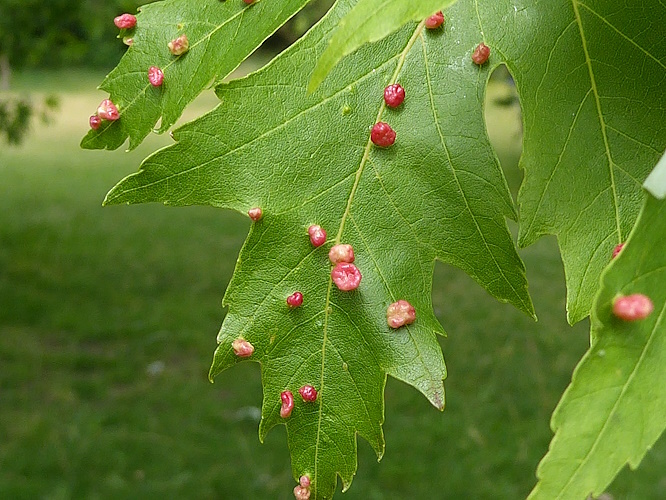
Lurking between the mite-infested leaves was a splendid insect, the Red-legged Shield Bug Pentatoma rufipes. It is a native species, widespread and common. New adults are said to emerge from July onwards, so this must be a fresh new one.
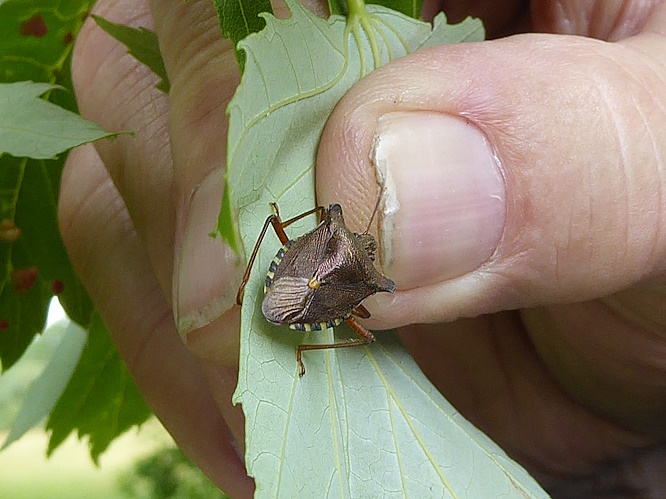
Some other trees we checked were the Indian Bean tree behind the central café, now in lovely flower, and we confirmed that it wasn’t the rarer Western Catalpa.
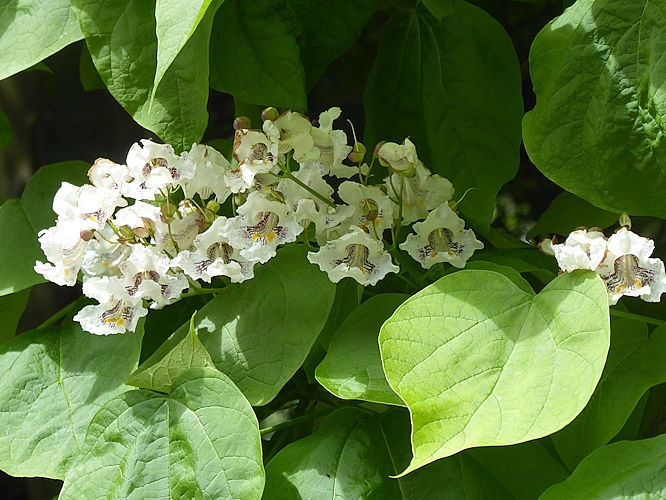
The Atlas Cedar on the south western bank of the lake was growing its new cones. The fresh ones have the diagnostic dimples in the top, which you can see in the ones tilted forward (Cedar of Lebanon cones are pointed) and this photo also shows the remains of the old cones on the left – just a stalk and a base, with the seed-bearing scales all flaked off.
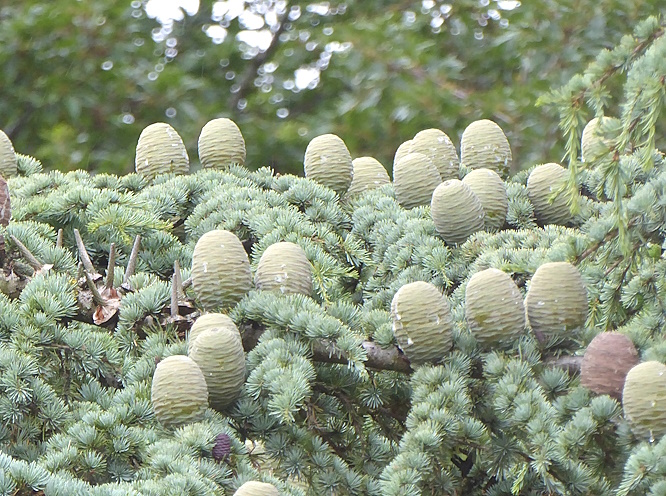
A cold wind blew up as we ate our lunch so we headed to the woods south of the Palm House. There were plenty of Grey Squirrels about, and also the ubiquitous Magpies, Wood Pigeons and Feral Pigeons. In the trees near the bird feeders we saw small parties of mixed Tits and a couple of Goldfinches. Several Ring-necked Parakeets were squawking and seemed to be in dispute with a gang of Magpies.
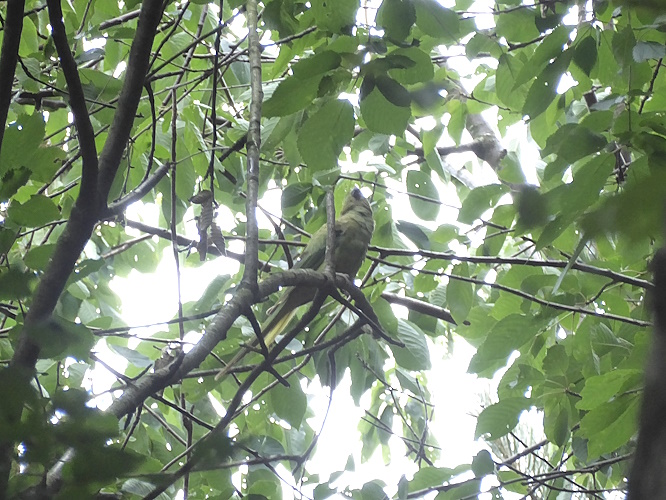
As we headed back around the east side of the island we found a man with a camera, and he was patiently observing a Great Crested Grebe nest on the edge of the island. There are four eggs, he said, he had seen the last one being laid, and it was probably a couple of weeks to hatching. The singleton bird we had seen earlier must have been the other partner, on patrol.
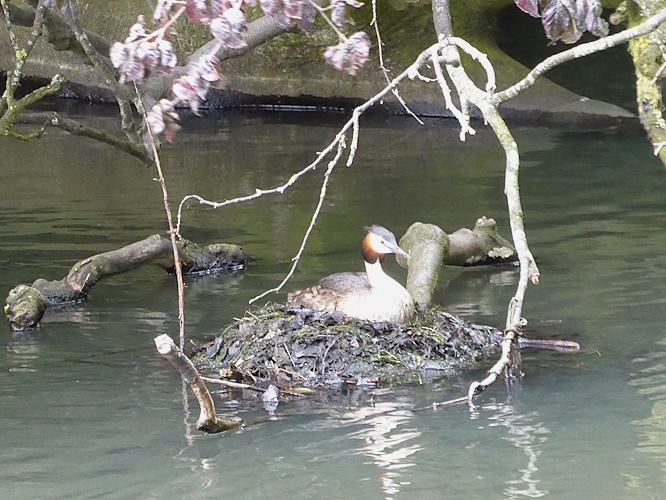
Public transport details: Bus 82 from Elliot Street at 10.02, arriving Aigburth Road opp. Ashbourne Road at 10.17. Returned from Aigburth Road / Jericho Lane on the 82 at 1.55, arriving city centre 2.15.
